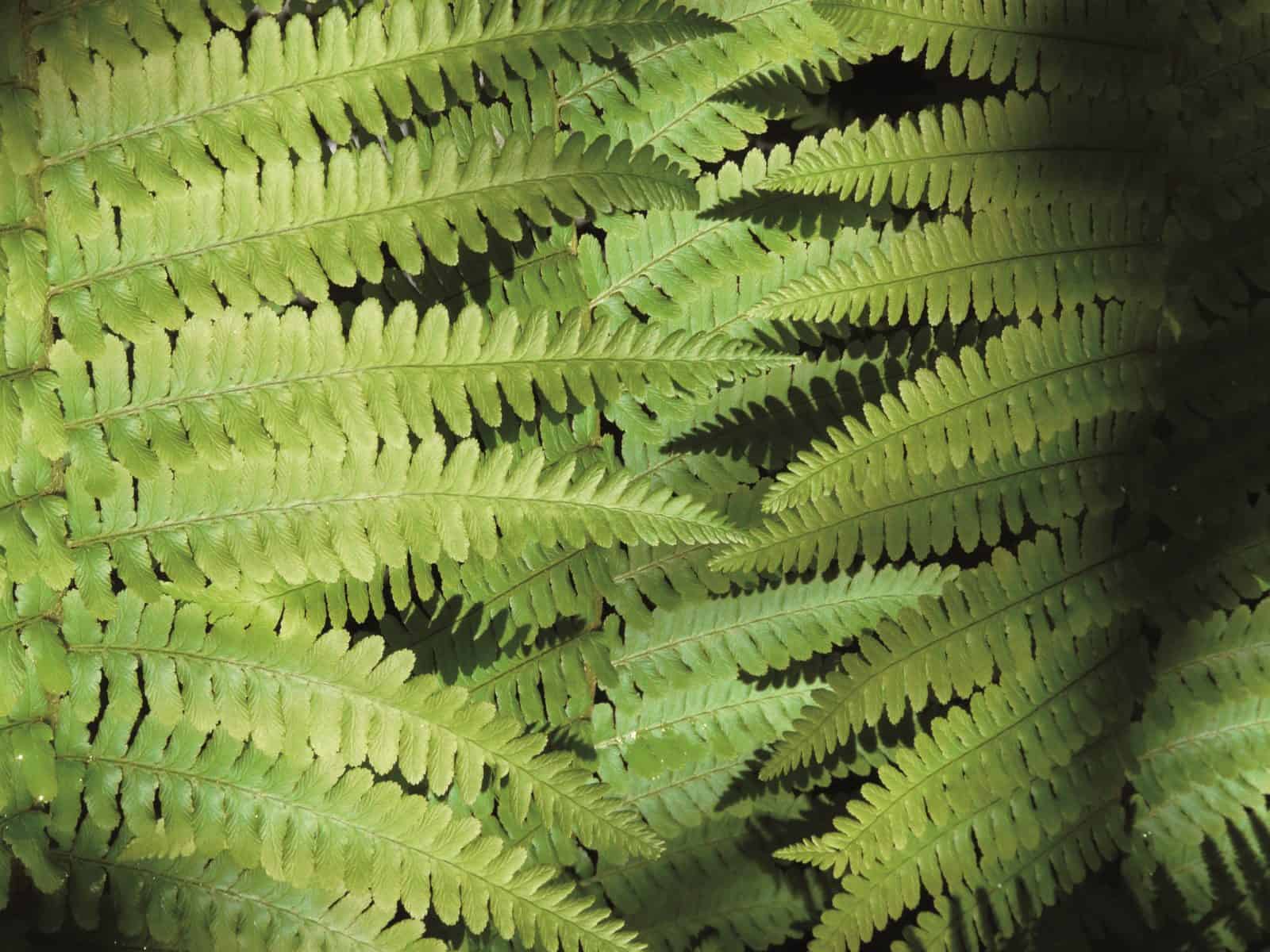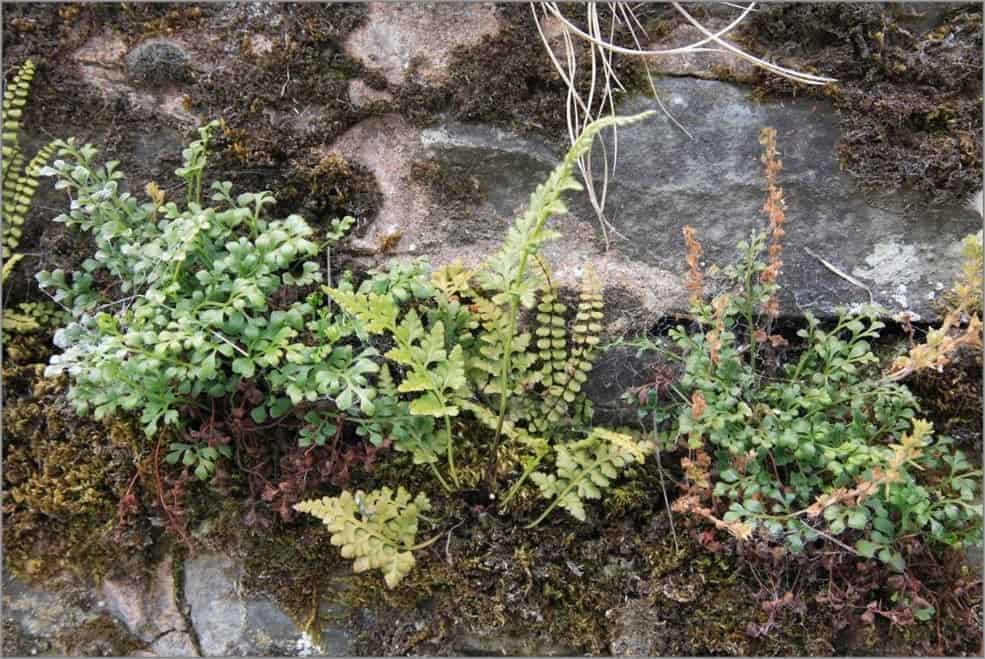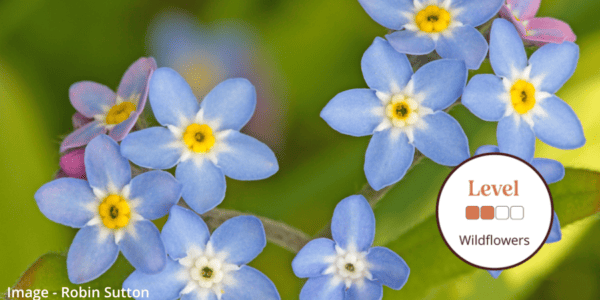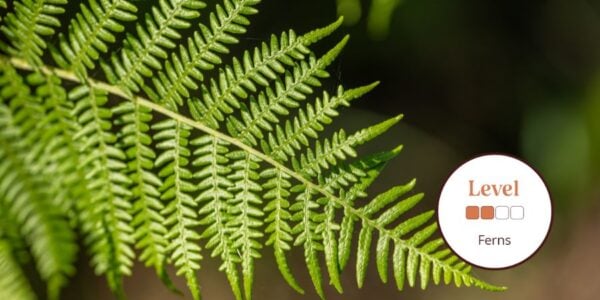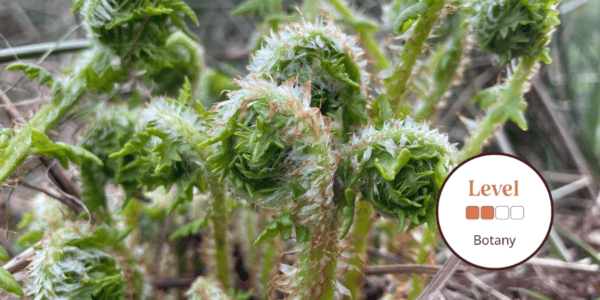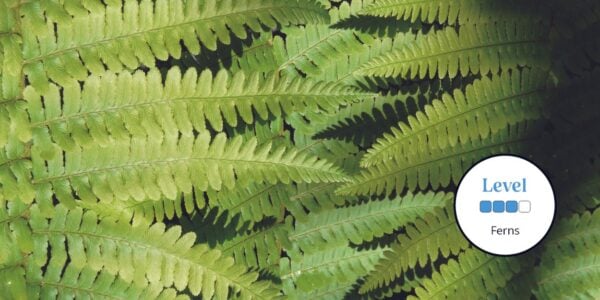This beginner fern course will explore the different groups of ferns found in the UK, key terminology and guidance on their identification.
Ferns are pteridophytes, a class of quite diverse plants that include clubmosses, quillworts, horsetails and the ferns themselves, some of them evolving over 400 million years ago.
During this beginner fern course, you will learn how to identify and interpret the vegetative structures of ferns that are visible through a hand lens. Even without flowers, ferns can still be readily identified and appreciated by concentrating on their foliage and the apparently hidden reproductive structures that they hold. Using a range of botanical features, we will become familiar with the terminology and techniques to make accurate and successful identifications, as well as learn about their natural history and ecology along the way. Whilst ferns might not have the showy flowers and floral part that we are used to in wildflowers, they are equally as fascinating.
Preston Montford is set on a 12-hectare estate, surrounded by a rich range of habitats, including the River Severn and semi-ancient woodland, set in the heart of Shropshire with views disappearing into Wales
PLEASE NOTE: The course fee is for tuition only. If you would like to book accommodation, lunch and an evening meal at Preston Montford, please email [email protected]
If you love woodlands and are interested in learning how to identify the numerous species of fern found in such habitats, then this course is for you!
Who Should Attend?
Nature enthusiasts, Students, Early career ecologists, Citizen scientists, Volunteer surveyors.
Knowledge Level
Beginner. Level descriptors can be found on the following webpage: Framework and Course Level Descriptors
Prior Knowledge
A basic understanding of plants would be beneficial but no specific experience is needed for this course.
What will be covered during this course?
-
- The evolution of ferns
- How the various groups of pteridophytes differ from one another
- Alternation of generations-fern reproduction
- Habitats where ferns can be found
- Fern structure and terminology
- Identifying ferns using the AIDGAP guide
- Ferns and their applications to humans
- Observing a wide variety of woodland species in situ
By the end of the course, you will be able to:
-
- Describe the diversity of the pteridophytes group
- Describe the fern lifecycle and how this can help with identification
- Explain the structures associated with ferns and their allies
- Appreciate the diverse habitats in which ferns can be found
- Confidently identify a number of ferns in the field using the AIDGAP Guide to ferns
- Share this knowledge with friends, family and fellow volunteers
The course gives you the opportunity to immerse yourself in a new subject and acquire novel skills. Our fantastic tutor will combine the use of classroom-led learning and outside learning opportunities to give individuals the skills and confidence to progress their learning.
-
- See the ‘Example Timetable’ and ‘What’s Included’ sections below for more information about this course.
- Upon booking you will need to provide individual details of all attendees
- Please email [email protected] if you have any questions.
Group Bookings Made Easy
If you have a group of 10 or more individuals wanting to complete one of our courses, our team are available to discuss your options – from discounts to private team courses.
-
- Discounted rates
- Privately run courses for your group
- Bespoke courses developed specifically for your needs
Click here for more information!
If we are unable reach viable numbers for this course, we will inform you of the course cancellation 14 days prior to the course run. We would recommend when purchasing accommodation and/or travel you should take out your own insurance.
Tutor: Fiona Gomersall
Fiona Gomersall is a trained biology teacher and skilled field botanist. She is Conservation Officer at Shropshire Wildlife Trust and is an active member of the Shropshire Botanical Society. Fiona’s monitoring and botanical survey work takes her all over the county to the 40 nature reserves and several hundred local wildlife sites.Book with Confidence
We understand the difficulties of making plans in the current situation when guidelines continue to change, and insurance conditions are being tightened. In response, we will continue to offer additional flexibility. Find out more here
Example Timetable
Example Timetable
This timetable is subject to change but should give a clear outline of what to expect
-
- Please arrive in time for the course to start promptly at 10:00am
- The course will end at 5:00pm
| 10:00am | Welcome, H&S, introductions |
| 10:15am | Seminar - Introduction to pteridophytes |
| 11:00am | Break – refreshments not provided |
| 11:15am | Lab Session - Looking at specimens |
| 12:30pm | Field Session |
| 1:30pm | Lunch in the field - not provided |
| 2:30pm | Continued field session |
| 4:00pm | Return to classroom - plenary and final questions |
| 5:00pm | End of day 1 |
Please note accommodation, refreshments and an evening meal are not included
What's Included
What’s included?
- Classroom learning covering the theory of the subject
- Field excursions to apply new knowledge
- Expert tuition for which the Field Studies Council is renowned
- Clear objectives and progression
You can rest assured that the absolute best content from an expert in environmental education will be provided. In choosing a Field Studies Council course, you will be joining thousands of people who learn with us each year.
Reviews
-
★★★★☆
The course was well planned and paced so it was easy to absorb the information we were being taught. The tutors were knowable and easily approached.
-
★★★★★
Everyone was lovely, and motivated to learn
-
★★★★☆
An excellent course.
-
★★★★☆
TThe site visits were fantastic
Before You Attend
There will be a member of staff with first aid training and access to a first aid kit on site. If you have special medical or access requirements, please let us know as soon as possible so we can make any necessary adjustments.
What to Bring
- Stout walking shoes or boots
- Outdoor clothing suitable for all potential weather conditions
- Lunch and refreshments
- Small rucksack or bag
- Field notebook and pencil
- x10 or x20 hand lens if you possess one
Useful books and resources:
- The Field Studies Council AIDGAP guide to ferns
- Britain’s Ferns A field guide to the clubmosses, quillworts, horsetails and ferns of Great Britain (WILDGuides)
Sorry this course has ended

